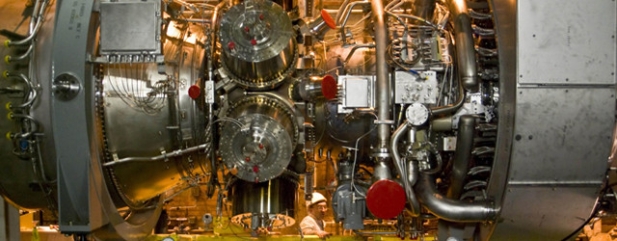Archived article
Please note that tax, investment, pension and ISA rules can change and the information and any views contained in this article may now be inaccurate.
Aerospace stocks reeling as orders slow

A profit warning from aerospace and defence firm Senior (SNR) is evidence of a civil aerospace market in decline with negative implications for peers like Meggitt (MGGT) and Rolls Royce (RR.).
After years in which aerospace exposure was seen as preferable to defence and afforded a higher rating by the market, this situation could now be in reverse.
On 20 October Senior blamed issues in its Aerospace division as it warned on full year earnings – Investec expecting consensus pre-tax profit forecasts to come down 10% for 2016 and 2017.
The company is facing a slower than anticipated ramp up in some major new aircraft programmes, a continuing decline in the business jets market as wells as undisclosed supplier issues and unresolved discussions on price increases with major customers.
It is the first two of these factors which demonstrate the wider issues facing the sector and which may have investors in Meggitt and Rolls feeling twitchy ahead of updates on 15 November and 16 November respectively.
Post-crisis take off
In the wake of the financial crisis the civil aerospace sector has been a notable bright spot. High oil prices have fuelled a desire for more efficient aircraft, passenger numbers have been strong as budget airlines have expanded and emerging markets have provided a third leg to this growth story.
Around 13,000 commercial jets were ordered over the five years to the end of April 2016, according to Flight Ascend Consultancy, while the backlog of commercial jet deliveries was worth $952 billion in mid-2016.
However, according to John Harzich, senior security analyst at Aviva Investors the cycle may now have peaked.
‘There is evidence that the likes of Boeing (BA.:NYSE) and Airbus (AIR:EPA) have been overproducing aircraft recently - with production reaching high rates at both manufacturers, just as order books appear to be slowing,’ says Harzich.
Both Boeing and Airbus endured disappointing order intake at the industry’s flagship event the Farnborough Air Show in July 2016 and the latter is reported to be considering a major restructuring and cost-cutting programme. This is bad news for engine manufacturers like Rolls and makers of other aircraft components like Meggitt and Senior.
Entering a tailspin
Signs of overcapacity and decline were first in evidence in the business jets space. ‘Until recently, the sector enjoyed strong demand from emerging markets but that has started to wane because economic growth has slowed; particularly in oil-dependent economies such as Russia, with the Middle East and some countries in East Asia also affected,’ says Harzich.
‘The economic slowdown in China is also biting, while US companies are bearing down on costs and this is hitting demand for business jets.’
Now the same headwinds are starting to hit the wider space, exacerbated by falling oil prices, which reduces the rationale for bringing on newer, more efficient aircraft and the impact of global terrorism on appetite for air travel.
'Traditionally, when the airline industry enters a weaker part of the cycle, demand for wide-bodied aircraft falls faster than for narrow-bodied'
Mixed fortunes
Against this backdrop the fortunes of narrow-bodied planes like the Airbus A320 and Boeing 757 are diverging with wide-bodied aircraft such as the Airbus A380. Nearly 85% of Airbus orders in 2016 through to the end of September were for narrow-bodied craft. This is despite years of heavy investment from the company in wide-bodied jets in the belief this was the future of air travel.
Various factors lie behind the dominance of narrow-bodied jets according to Harzich. ‘Traditionally, when the airline industry enters a weaker part of the cycle, demand for wide-bodied aircraft falls faster than for narrow-bodied,’ he says. ‘This reflects the greater flexibility that narrow-bodied planes offer in terms of the number of routes they can operate on, whereas wide bodied tend to be used on particular missions, notably long haul.’
Altitude warning
Like Airbus, the of-late accident prone Rolls-Royce is potentially on the wrong side of this trend.
‘The seeds for recent profit warnings were sown back in 2011 with the decision to exit narrow-bodies and compete with General Electric (GE:NYSE) in large engines without any distinctive competitive advantage and a weaker balance sheet,’ says Panmure analyst Sanjay Jha.
‘The gulf between RR and GE (and now Pratt & Whitney) is set to widen from 2017 as the next-generation narrow-bodies (A321neoLR, 787 MAX 8) begin to penetrate the medium haul routes and threaten the cash flows expected from RR’s growing wide-body installed base,’ he adds.
‘RR may have the opportunity in the narrow-body market should Boeing decide to launch a replacement for B757, but it will need fresh equity given c£2-2.5bn needed to develop a new engine.’
We recently flagged Meggitt as a secure income play (see Rock Solid Income, 14 Jul 2016). The company has enjoyed a 12% bump in the share price in the interim to 450p and a strong balance sheet and decent cash generation means we remain confident the dividend can be sustained. Meggitt is our top pick in the sector.
However, investors should watch upcoming announcements closely to discern if it will fall victim to the negative dynamics affecting aerospace. (TS)
Important information:
These articles are provided by Shares magazine which is published by AJ Bell Media, a part of AJ Bell. Shares is not written by AJ Bell.
Shares is provided for your general information and use and is not a personal recommendation to invest. It is not intended to be relied upon by you in making or not making any investment decisions. The investments referred to in these articles will not be suitable for all investors. If in doubt please seek appropriate independent financial advice.
Investors acting on the information in these articles do so at their own risk and AJ Bell Media and its staff do not accept liability for losses suffered by investors as a result of their investment decisions.

 magazine
magazine









